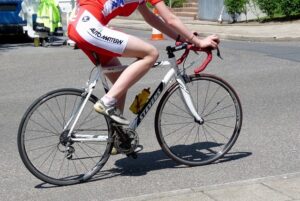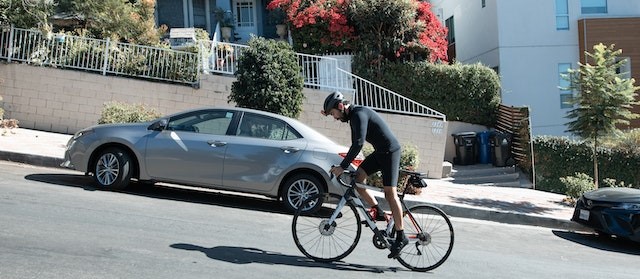As a passionate cyclist, I’ve always been captivated not only by the sheer exhilaration of pedaling down scenic routes but also by the intricate science that underpins this seemingly simple act. Cycling, it turns out, is not just a sport but a dynamic interplay of physics and biomechanics. In this article, I’ll take you on a journey into the world of the science of cycling, unraveling the secrets that make our two-wheeled motion possible.
The Physics of Pedaling
When you push those pedals, you’re engaging in a beautifully complex dance with the laws of physics:
Newton’s Laws of Motion in Action

Cycling is a prime example of Sir Isaac Newton’s laws of motion at work. Newton’s first law, the law of inertia, explains that an object at rest tends to stay at rest, and an object in motion tends to stay in motion unless acted upon by an external force. When you start pedaling, your bike’s initial inertia gives way to a rhythmic motion that you maintain through continuous pedal strokes, thanks to your own force applied to the pedals.
Friction and Resistance
One of the main forces you contend with while cycling is friction, both on the road and within your bike’s moving parts. Tires grip the road through friction, allowing you to maintain control. Reducing friction by keeping your bike well-lubricated is key to smoother rides and less energy expenditure.
Aerodynamics
As you pick up speed, air resistance becomes a significant factor. The faster you go, the greater the force of air pushing against you. This is why cyclists often adopt aerodynamic positions to minimize drag and increase speed efficiency.
The Biomechanics of Motion
The human body’s role in cycling is just as fascinating as the physics. Here’s a glimpse into the biomechanics:
Efficient Pedal Strokes

The goal of a cyclist is to maximize power output while minimizing energy wastage. Achieving this involves using the muscles effectively. The quads, hamstrings, and calf muscles play a vital role in producing power during the downstroke, while the hip flexors and hamstrings aid in lifting the pedal on the upstroke. Proper pedaling technique ensures a harmonious interplay of these muscle groups.
Balance and Coordination
Cycling also requires a keen sense of balance and coordination. Maintaining stability on two wheels is a result of precise muscle control and reflexes. Your brain constantly processes sensory information to make split-second adjustments to keep you upright.
Gearing and Cadence
Understanding the relationship between gearing and cadence is crucial. Gearing refers to the ratio between the size of the front and rear gears, while cadence is the rate at which you pedal. Finding the right combination allows you to optimize your energy output for various terrains and riding goals.
The Role of Nutrition and Physiology
The science of cycling isn’t limited to mechanics; it extends to your body’s physiology and nutritional needs:
Energy Expenditure
Cycling demands energy, and understanding how your body uses it is essential. Factors like your basal metabolic rate, intensity of cycling, and duration influence the number of calories burned. Proper nutrition and hydration are crucial to sustaining your energy levels during a ride.

Muscle Adaptation
Regular cycling leads to muscle adaptations. Your cardiovascular system becomes more efficient at pumping blood and oxygen, while your muscles adapt to the demands of the sport. Learning about these adaptations can help you train more effectively.
Conclusion: Embracing the Science of Cycling
Cycling isn’t just a leisurely pastime or a mode of transportation; it’s a symphony of physics, biomechanics, and physiology. By understanding the science behind cycling, you can become a more knowledgeable and efficient cyclist. Whether you’re aiming to improve your performance or simply deepen your appreciation for the sport, delving into the intricacies of cycling’s mechanics can be a rewarding journey. So, the next time you hop on your bike, remember that you’re not just riding; you’re engaging in a fascinating scientific adventure on two wheels.

